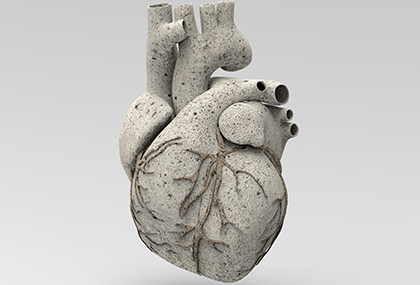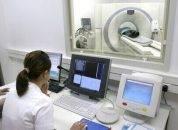CAD related acute phenomena often present as a consequence of poor risk factor monitoring over time. Early detection of these patients, especially high risk patients, has significantly contributed to reducing morbimortality over time. Coronary artery calcification (CAC) is considered a measure of atherosclerosis burden in and might be present in asymptomatic individuals. Most centers do…
Prognostic Impact of SYNTAX and SYNTAX II Scores in Patients with Acute Myocardial Infarction
Acute myocardial infarction (AMI) continues to be a clinically significant condition due to its association with morbidity and mortality after the initial event. Therefore, the prognostic stratification of these patients is of vital importance. One of the tools that have been used for several years for this purpose is the SYNTAX I (SS) and SYNTAX…
ISCHEMIA Trial: Does Complete Anatomical or Functional Revascularization Modify Anything Compared with Medical Treatment?
Chronic coronary syndrome (CCS) has been considered another comorbidity in previous studies, and there has been no significant reduction in cardiovascular mortality or myocardial infarction (MI) rates with revascularization through percutaneous coronary intervention (PCI) or myocardial revascularization surgery (MRS) compared with optimal medical treatment (OMT). One possible reason for the lack of benefit has been…
Substudy TALOS AMI: from Ticagrelor to Clopidogrel in Patients with High Risk of Bleeding and AMI
The preference for the use of potent P2Y12 inhibitors such as ticagrelor and prasugrel in patients with high risk of acute myocardial infarction (AMI) undergoing percutaneous coronary intervention (PCI) is based on randomized studies and current guideline recommendations. However, clopidogrel is still recommended for patients at high risk of bleeding. Several strategies have been looked…
AMI and Multivessel Disease: Can We Perform a Single Procedure?
Percutaneous coronary intervention (PCI) is considered the treatment of choice in ST-segment elevation myocardial infarction (STEMI). However, it is widely acknowledged that, in many cases, there are significant lesions in other coronary arteries. Previous randomized studies have shown that complete revascularization in a second procedure is more beneficial than intervention only in the culprit artery.…
BIFURCAT Registry: Long Term Diabetes Impact on Bifurcations PCI Outcomes
The impact of diabetes in patients with coronary artery disease (CAD) are well known, and after percutaneous coronary intervention (PCI), outcomes tend to be less favorable, with higher restenosis rate, repeat myocardial infarction (MI) and stent thrombosis. Despite the development of drug eluting stents, procedures and techniques, treating bifurcation lesions in diabetic patients still show…
Is Complete Revascularization Really Necessary after AMI in the Elderly?
The population over 75 is growing gradually, which entails an increase in acute myocardial infarction (AMI) in this group. As we all know, it is fairly common for AMI to present with multivessel disease. It has been shown that younger patients will benefit from complete revascularization vs. a simple resolution of the culprit vessel. However,…
OCT-Guided PCTA: Does It Offer any Benefits?
For many years, percutaneous transluminal coronary angioplasty (PCTA) has expanded significantly worldwide. However, despite the demonstrated advantages of intravascular ultrasound (IVUS) in terms of minimal luminal area, reduced cardiovascular events, and restenosis, its use is not very common due to various reasons. On the other hand, optical coherence tomography (OCT) offers even higher resolution than…
What to Do in Cases of AMI with Multivessel Disease
The presence of lesions in multiple vessels is common in ST-segment elevation myocardial infarction (STEMI). It has been shown that, when they are treated in a second procedure, patients have a better outcome. To date, there is limited information available on percutaneous transluminal coronary angioplasty (PTCA) in vessels with severe non-culprit lesions during primary angioplasty.…
ROTA.shock Outcomes: Intravascular Lithotripsy vs. Rotational Atherectomy
At present, severe calcified coronary stenosis poses a significant challenge for PCI. A successful intervention will require plaque modification prior stenting, seeing as sub-expansion has been associated with worse clinical outcomes at followup. The tools normally used to treat these complex lesions include specialized balloons such as cutting, scoring, and high pressure balloons, as well…
ESC 2023 | OCTIVUS TRIAL: Is OCT Superior?
Researchers conducted a multicenter randomized study involving 2008 patients undergoing coronary angioplasty (PCI). In this group, 1005 patients underwent a procedure guided by OCT, and 1003 patients by IVUS. The average age of participants was 65 years, 21% of subjects were women, and there were no significant differences between both groups. The primary endpoint was…









